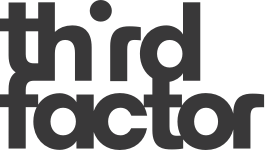“The Kingdom of Prep” chronicles the evolution of J.Crew, charting its rise from a modest mail-order catalog in 1983 to a powerhouse in American fashion. Drawing on interviews with insiders and industry experts, Maggie Bullock offers a vivid portrait of the brand’s ascent, its cultural significance, and the hurdles it faced in a rapidly shifting retail landscape. Blending fashion, business, and cultural commentary, The Kingdom of Prep provides a compelling look at how a brand can both influence, and be influenced by, the cultural zeitgeist.
“From the Ashes” by Jesse Thistle is a powerful memoir of abandonment, addiction, and survival. Thistle’s journey from homelessness to becoming a celebrated scholar offers a raw, inspiring look at the resilience of the human spirit and sheds light on the struggles faced by Indigenous peoples in Canada. I recommend it because engaging with Canadian history through the lived experience of a Canadian author offers a meaningful and intellectually enriching way to deepen my understanding of my country’s complex social and cultural landscape. Jesse Thistle is Métis-Cree, from Prince Albert, Saskatchewan. He teaches Métis Studies at York University in Toronto, where he lives. He won a Governor General’s Academic Medal in 2016, and was a Pierre Elliot Trudeau Scholar and a Vanier Scholar.
With all the greenery of summer, what better time is there to connect to our literal and figurative roots! Feghali’s book offers a captivating journey into cultural history and ancestral herbalism of the Levant (the “Middle East”). Through beautifully woven stories of folk healing and plant medicine, her book provides a unique and slightly esoteric lens for understanding the often unseen yet profound connection many folks we lead and coach have with their cultural homelands. It’s a great summer read for those seeking an insightful yet gentle exploration of identity belonging, and the powerful ties between peoples, plants, herbs, and ancestral lands.
“10x Is Easier Than 2x” challenges the idea that success comes from working harder and making small improvements. Instead, Hardy argues real success comes from thinking bigger, focusing on what truly matters, and making bold, transformative changes. The book offers a strong core message: aiming for 10x growth requires letting go of the familiar and concentrating on your unique strengths. It encourages you to let go of what’s “good” to pursue extraordinary goals. It offers an inspiring roadmap for breaking through limitations and achieving extraordinary results. It’s a perfect summer read, where the season offers us the time to have the capacity and energy for reflection and renewal, making it a great time to narrow your focus, gain clarity, and embrace the idea of doing less to achieve so much more.
“Challenger” is a tour de force. Author Adam Higginbotham manages to combine a thoroughly researched history of the US space program, culminating in a minute-by-minute breakdown of the Challenger disaster, with deeply personal portraits of both the astronauts and NASA pioneers. Throughout, he shows how the pressure to deliver can warp decision-making, change the way we think about risk and, ultimately, lead to catastrophe – even amongst hugely intelligent and well-meaning groups of people. It’s the rare non-fiction book that is both a gripping, narrative-driven story and also deeply insightful.
In the theme of all that is old is new again, this summer I’ll be reading “The Hitchhikers Guide to the Galaxy” by Douglas Adams. After 40 years of friends, family and co-workers commenting on the deceptive brilliance (and humour) of this book that has fathered a thousand memes – it’s time for me to take the plunge and see what the fuss is still about. If it lives up to its hype, then maybe it’s time for me to cue up the similarly hyped “The Wire” on my appropriate streaming service. The added bonus of my selection is that I have no shortage of people willing to lend me a copy.
Historical fiction is the means by which I travel and learn when my feet are up in the summer. If you love a literary escape too, this substantial read is incredibly satisfying. With a backdrop of political unrest in Ethiopia, then healthcare in the USA, this immersion into the world of medicine is an emotionally compelling family epic. Through a complex web of life stories it is deeply informative about the human condition, our strengths and deficits, and how destinies unfold through tragedy, compassion and expertise. The author is a medical doctor and Stanford professor whose writing is detailed, realistic and moving. This ranks as one of my favourite novels ever.
So many of our conversations feel highly charged these days, like we’re all one comment away from a full-blown debate. In “Outraged”, psychologist Kurt Gray explores why moral outrage has become such a dominant part of public life and what it reveals about human nature. Without minimizing the seriousness of injustice or pretending we can all just “get along,” Gray looks at why we react the way we do to controversial issues, and how our brains are wired to divide the world into heroes and villains. It won’t solve polarization overnight, but it just might help us talk about divisive issues with a little more empathy and a little less heat.
“Sound Man” is a fun and entertaining journey through rock and roll history as told through the eyes of legendary producer and recording engineer Glyn Johns. Johns recorded some of the most famous rock albums of all time by the biggest names in music. His tone is refreshingly no-nonsense, often tinged with dry British wit which I so enjoy. Three rather unexpected reminders I took away from the book were: 1. The value of making connections: never shy away from meeting new people 2. Always be ready to improvise: the ability to think on your feet can be helpful in any situation, 3. Don’t make assumptions: always better to ask than assume.
This summer as I have time to think more deeply, the book I am going to dive into is The Good Fight by Liane Davey. This book challenges the myth that great teams are conflict-free and instead shows how healthy, productive conflict is essential for trust, innovation, and performance. Liane Davey offers practical tools to help you surface tough issues, navigate disagreement with respect, and build a culture where real collaboration can thrive. This book promises to shift how you think about conflict, and teach you how to harness the underlying energy to make changes and gain greater clarity, courage, and connection. If you are also reading it this summer – please share with me the points that most resonate with you and why. I love hearing real stories and examples from the brilliant minds I have the pleasure of connecting with.
I highly recommend “When The World Fell Silent,” a great fictional story that centres on the very real Halifax explosion of 1917 – which was the most powerful explosion in world history until the nuclear blasts at the end of World War II. Weaving multiple intertwined storylines together, it is a terrific mix of history and story-telling that is both moving and fascinating.
“The Culture Map” is one of those books I wish someone had slipped into my backpack years ago. It’s a smart and practical guide to navigating the often invisible cultural differences that shape how we communicate, give feedback, make decisions, and lead in global teams. Back in my days as an athlete, I traveled the world thinking I was pretty adaptable, until I found myself confused in a dozen different languages, misreading cues, and wondering why what worked in one country totally flopped in another. It turns out that “figuring it out as you go” is not a solid cross-cultural strategy (who knew?). Fast-forward to today, I see similar dynamics playing out in the global teams I support. The same awkward moments, just with more Zoom calls and fewer passports. Erin’s book sheds light on why those bumps might be happening and offers a clear, often entertaining way to understand and navigate them. Her stories are relatable, funny, and a little too familiar at times!
If you like a book with great characters, lots of heart and humour along with big doses of hope for the human race this is a great novel; one of my favourites of the year. I found it completely captivating, insightful, and heart warming. It is almost impossible to relay ‘the story’ – there are so many subplots. It is about the lives of people living in a small, poor community made up of European immigrants and Black Americans in the thirties. Their community borders a white, Christian town. There is a mystery to be solved, a boy to be saved, and a community of characters that elevates humanity in spite of our diversity, oddities, and flaws. An underlying moral compass around facing life’s challenges, augmented with some mischief, pervades the book, all relayed with a wonderfully non judgemental perspective and a light touch.
While uncertainty and change present an array of challenges for today’s leaders, a less obvious one is the need to coach for confidence.
Confidence – the inner belief by an individual in their capacity to successfully meet the demands of a performance situation – is an ephemeral quality or state of mind. It’s difficult to observe, quantify or measure, and yet it’s an undeniable performance enabler. When people are confident, they can more fully express their capabilities, and are more willing to make decisions, innovate and take calculated risks.
When the New Zealand men’s National Curling Team undertook a largely self-funded move to Calgary, Alberta to enhance their preparation for the 2024 World Championships, they encountered a frustrating obstacle: rental housing was scarce and expensive. Cassandra Murray, a Retirement Living Consultant with Chartwell, one of Canada’s largest owner-operators of retirement residences, saw their appeal for help on social media and reached out with an offer: the team could stay at the Chartwell Colonel Belcher retirement village during their 2-3 month stay.
Now, having a group of young athletes sharing a living space with a group of retirement residents is not without its risks, but Cassandra saw an opportunity that she was confident could provide huge benefits for all involved. The outcome was not only a heartwarming story, but a win for the team, the residents, the staff and the organization.
 Three-quarters of the New Zealand men’s national curling team in 2023.
Three-quarters of the New Zealand men’s national curling team in 2023.
And that’s the key thing. When we are truly confident, we think win-win. When we lose confidence, we play not-to-lose.
What follows are two practical approaches that we have seen effective leaders use to support the confidence of their people as they navigate change:
01.
Clarify strengths AND how to apply them in the new environment.
02.
Focus on progress, not perfection.
Clarify strengths AND how to apply them in the new environment
During times of significant change, people sometimes lose sight of their strengths or are unsure of how to apply them in new circumstances. As a leader, you may not have all the answers about how things will operate in the future, but you can help your team regain a sense of direction by reconnecting them with their core strengths and how to leverage them in a new environment.
Start by revisiting familiar ground. Encourage your team members to reflect on their past successes and identify the strengths that contributed to those achievements. Ask them specific questions that prompt introspection:
- Where have you been most successful in your current role?
- What skills or abilities helped you achieve those outcomes?
By guiding them through this process, you help them rebuild a foundation of confidence based on what they already know about themselves.
Once individuals have reconnected with their strengths, the conversation should then shift to the new environment. Discuss how their roles are changing, what challenges they anticipate, and what aspects of the new setup feel most daunting. From there, work together to identify ways their existing strengths can be applied to these new challenges. This process of translation—helping individuals see how their strengths remain relevant—creates a bridge between the past and the future.
Focus on progress, not perfection
The second coaching tool you can apply is to help people see progress. A proven track record of accomplishments is a huge source of confidence to rebut doubts, fears and voice of your inner critic. One of the challenges we face when we go through significant change is that we lose that track record. We’ve been successful in the environment and conditions of the past – but have a blank slate moving forward. And so, building a new track record becomes vital.
Start by creating a roadmap that identifies where they want to be six months or a year down the road, and then add-in markers of progress along the way. When our founder, Dr. Peter Jensen, works with a team one of the first things he does is create a visual staircase in which the bottom is the current moment, the top is the target (e.g., “Make the Paralympic team” or “win an Olympic Medal”) and the individual stairs are the key milestones. These can be skill-building initiatives, for example holding week-long winter training camp, or important accomplishments, such as finishing in the top 2 at a qualifying tournament.
It is remarkable how often high performers take for granted how much they know and have learned along the way. The goal for the coach is to highlight that growth and make it visible to the performer.
Once the staircase has been created, get them moving forward with a singular focus on the next step. The smaller the better. When a technical expert with a large US wealth management firm described how she got seasoned investment advisors to be comfortable using Zoom technology for client meetings during the Covid-19 pandemic, she replied “one meeting per day”. She scheduled a daily 15-minute zoom meeting with some of her veteran advisors to get them comfortable being onscreen and to allow them to play around with the technology in a safe, non-judgmental environment.
The value in having the overall framework is twofold. First, it helps the individuals embrace a learning mindset. Peter often reminds teams that “we’re going back to school” and that the key objectives are learning, practice, and improvement – all of which are under our control.
Second, having the roadmap allows the coach to periodically help the individuals and team step back and connect with the progress they have made. This can be particularly useful during a tough slog when it feels like nothing is getting done, or when a set-back occurs to help the team get past the disappointment by reminding them of how much has already been accomplished. It is remarkable how often high performers take for granted how much they know and have learned along the way. The goal for the coach is to highlight that growth and make it visible to the performer.
In Summary
Confidence is essential to sustaining courage through change, but confidence is ephemeral – and building it can be tricky: coaching for confidence requires empathy and a willingness to meet people where they are. With a twin focus on helping people see how their strengths can be applied in a new environment, and helping them connect with progress and small wins as they adapt, you can help them remain the bold, adaptable go-getters you know them to be.
At Third Factor, we’ve spent over four decades working at the intersection of business and sport. Our programs have always been shaped by the high-performance principles used by Olympic coaches, elite athletes, and championship teams. Today, we’re proud to deepen that connection with the formation of our Sport Advisory Board—a small, purpose-driven group of leaders who are shaping the future of sport. The Sport Advisory Board is an extension of our deep involvement in sport, and our philosophy that we find the best ideas by cross-pollinating ideas across different domains. It will help ensure that our offerings in the corporate world stay grounded in the latest insights from high-performance environments. Just as importantly, it provides a space for these sport leaders to access our coaching, consulting, and facilitation services to support their work developing athletes, teams, and organizations. We’re honoured to introduce the inaugural members of the Third Factor Sport Advisory Board:Mel Davidson
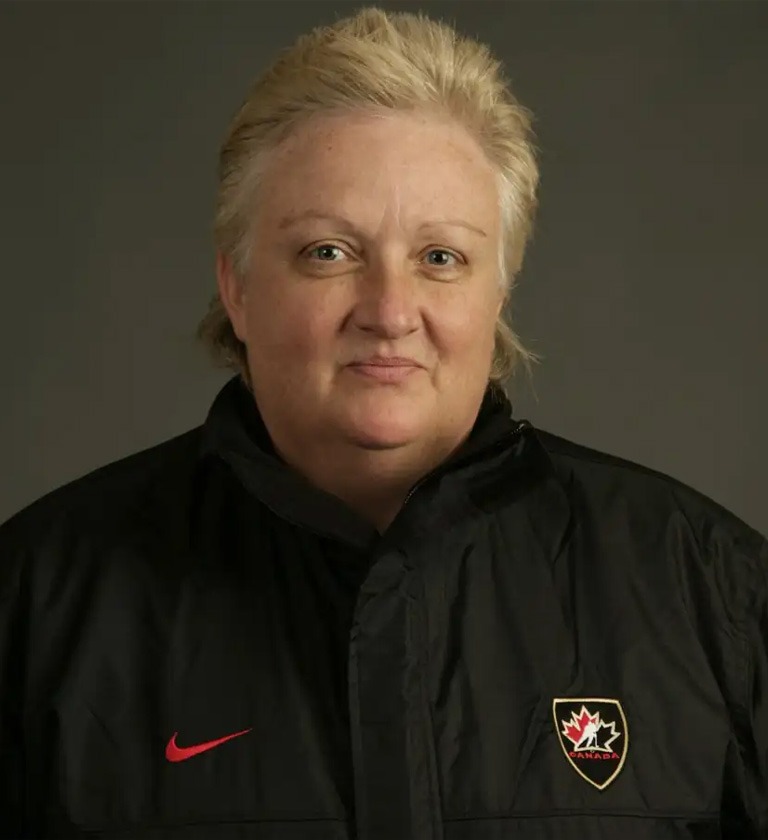
Debbie Low

Jesse Lumsden

Tracy Wilson

Confronting is a Coaching Conversation
Confronting is a coaching conversation. It doesn’t fit neatly with the popular notion that coaching is just about asking good questions, but watching Olympic coaches operate, as we have for 30 years, makes one thing very clear: having the courage to have a direct conversation when needed is vital to helping someone reach their highest potential. In fact, avoiding a difficult conversation about something that’s preventing a person’s success is the opposite of good coaching. That’s why confronting is one of the four core communication skills in our 3×4 Coaching model, and one that builds on the other three communication skills – questioning, listening, and feedback. It’s not the first or most frequent approach that coaches reach for, but it’s an important part of the overall coaching skill set. Knowing that you can navigate complex, high-stakes conversations is part of what underpins your confidence as a leader.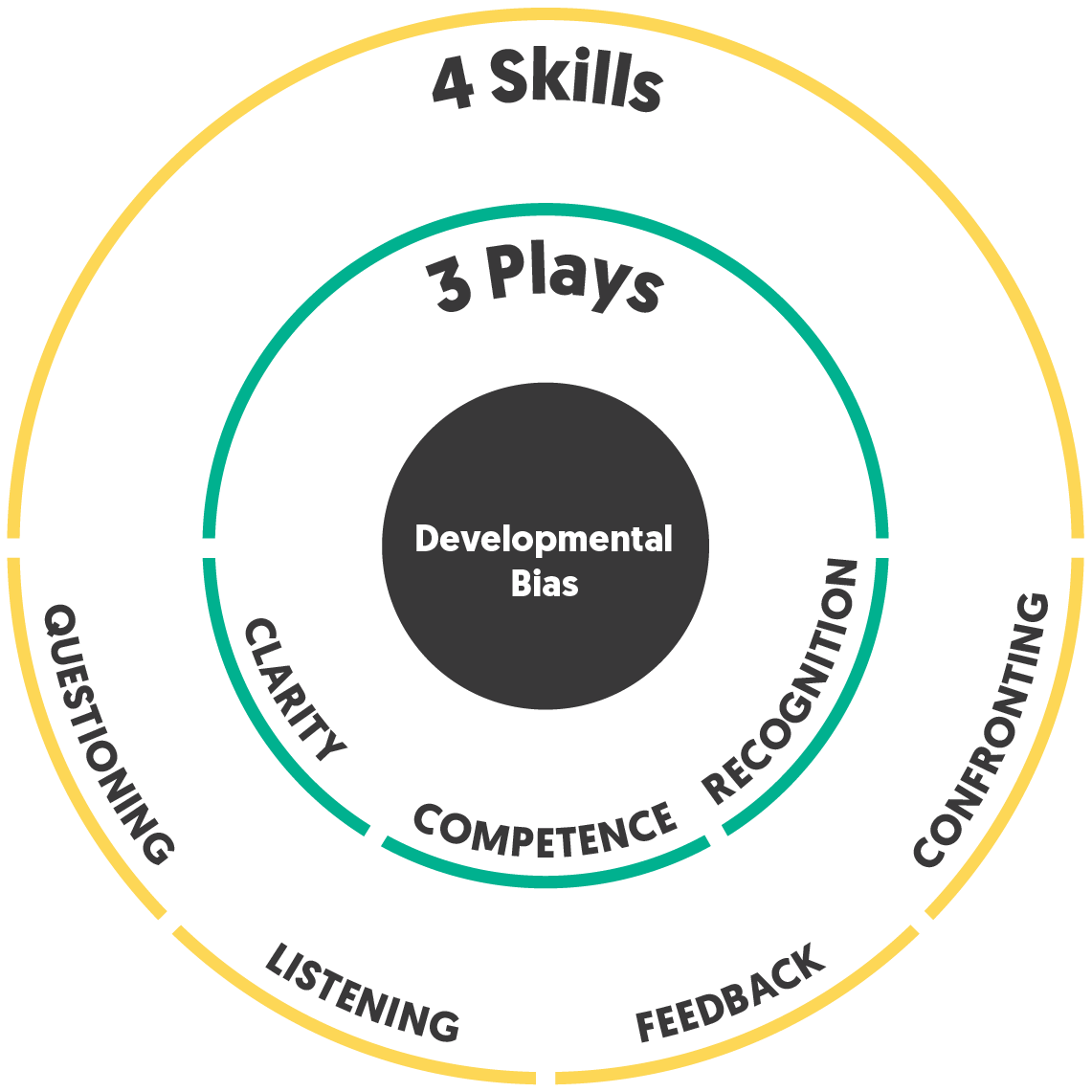
Choose Your Challenge
Having a confronting conversation with Leo is going to be challenging because I don’t want to damage our relationship. It doesn’t take tremendous courage to call up the airline after my flight was delayed and demand a refund because I only care about getting compensated, not my relationship with the customer service representative. But Leo is one of the strongest performers on my team and I want to have a good relationship after this conversation. It’s also going to be challenging because Leo has been resisting making this change and now it’s getting in the way of his success. This isn’t just a straightforward piece of feedback anymore. There are real stakes. If Leo’s behaviour continues, we could end up in the realm of more formal performance management channels.“When done effectively, these conversations can resolve the issue at hand, build the other person’s commitment to making progress, and strengthen the relationship.”It’s easy to see the threats in these conversations but there are also potential benefits. When done effectively, these conversations can resolve the issue at hand, build the other person’s commitment to making progress, and strengthen the relationship if they see you as someone who holds them to a high standard yet cares about them and respects them. So, I choose my challenge: I can avoid the conversation and deal with the fallout – Leo’s behaviour continues, our relationship becomes strained as my frustration seeps out, and I lose credibility with other people who see me allowing this behaviour to continue. Or I can face the discomfort of addressing the issue head-on and put my coaching skills to the test.
Connection Before Correction
Once I decide to address the issue, how do I have this conversation in a way that not only protects our relationship but gets Leo committed to making a change? It starts before I even enter the conversation. Often, we fall into the trap of thinking that we need to emotionally distance ourselves from the other person in order to be “tough” or objective. But it’s our relationship with the other person that’s the foundation for coaching them. I cannot coach Leo if I lose my connection to him. So rather than distancing myself, I start by strengthening my connection to Leo. I put myself in his shoes and explore the most generous, plausible story I can come up with for why he might be acting this way. Maybe he’s under a lot of pressure that is leaving him with little patience. Maybe I’m not aware of some underlying tension with his teammates. Or maybe Leo is so enthusiastic about his ideas that he doesn’t realize he’s shutting down other people. I choose the story that most strengthens my connection to Leo because it puts me in a mindset to engage in this conversation in a direct but caring way. I also need to get clear on the specific change I want to see – not all the ripple effects of Leo’s dismissive behaviour, or the fact that I’m also irritated because he was late for our team meeting yesterday – but the specific gap between what I need to see from him and what I’m currently getting.Open Strong
Next, I need to prepare my opening statement. This will set the tone and direction for the conversation. Without carefully crafting and practicing my opening, things can go sideways quickly. I could fall into the trap of starting with a sneak attack, “Well Leo, I guess you know why we’re having this conversation…” Or I might unleash my pent-up frustration and anger, leaving Leo like a deer in the headlights trying to respond. Or I might revert to the classic “feedback sandwich”, muddying my message and leaving Leo guessing at what I really mean. An effective opening is short – less than 60 seconds – and clearly articulates the specific behaviour that needs to change, the impact of that behaviour, what’s at stake if it doesn’t change, and my desire to work together to reach a resolution. “Leo, I want to talk to you about a pattern of dismissing input from your peers. For example, in yesterday’s meeting, Sarah raised a concern about the project timeline. You interrupted and said, ‘That’s not really an issue.’ I felt worried that you dismissed her question because I’ve noticed people hesitating to speak up in front of you. This can affect your ability to get the information needed to make good decisions and manage the concerns of staff. Advancing in this organization depends on your ability to build relationships and collaborate effectively. I haven’t been entirely clear on the importance of this, and that’s on me. I want to find a way to modify this behaviour. What are your thoughts?”Drop Your Agenda
After delivering my opening, it would be great if Leo said, “got it boss, no problem.” But that’s not what typically happens. I’m likely to get resistance – anger, excuses, deflection, or awkward silence. Counter-intuitively, that resistance is not something to fight against or try to “objection handle”; instead, I need to recognize that the path to a solution is through the resistance. So instead of defending my position, I drop my agenda and lean in to explore the resistance I’m getting from Leo. Questioning and listening are the critical coaching skills at this stage of the conversation. Questions to deepen and clarify my understanding of his story: Can you say more about that? Could you give me an example? What is significant about that? And active listening to draw the person out and check for understanding: So, what you’re saying is…, Let me see if I have this right… I stick with asking questions and listening until I can summarize what we call “the third story.” The third story represents all of what is true for me and what is true for Leo. It’s like I have a bucket, and I keep adding things into the bucket. I don’t take anything out and try to solve it yet. I just add things until we’ve collected all of what is true for both of us.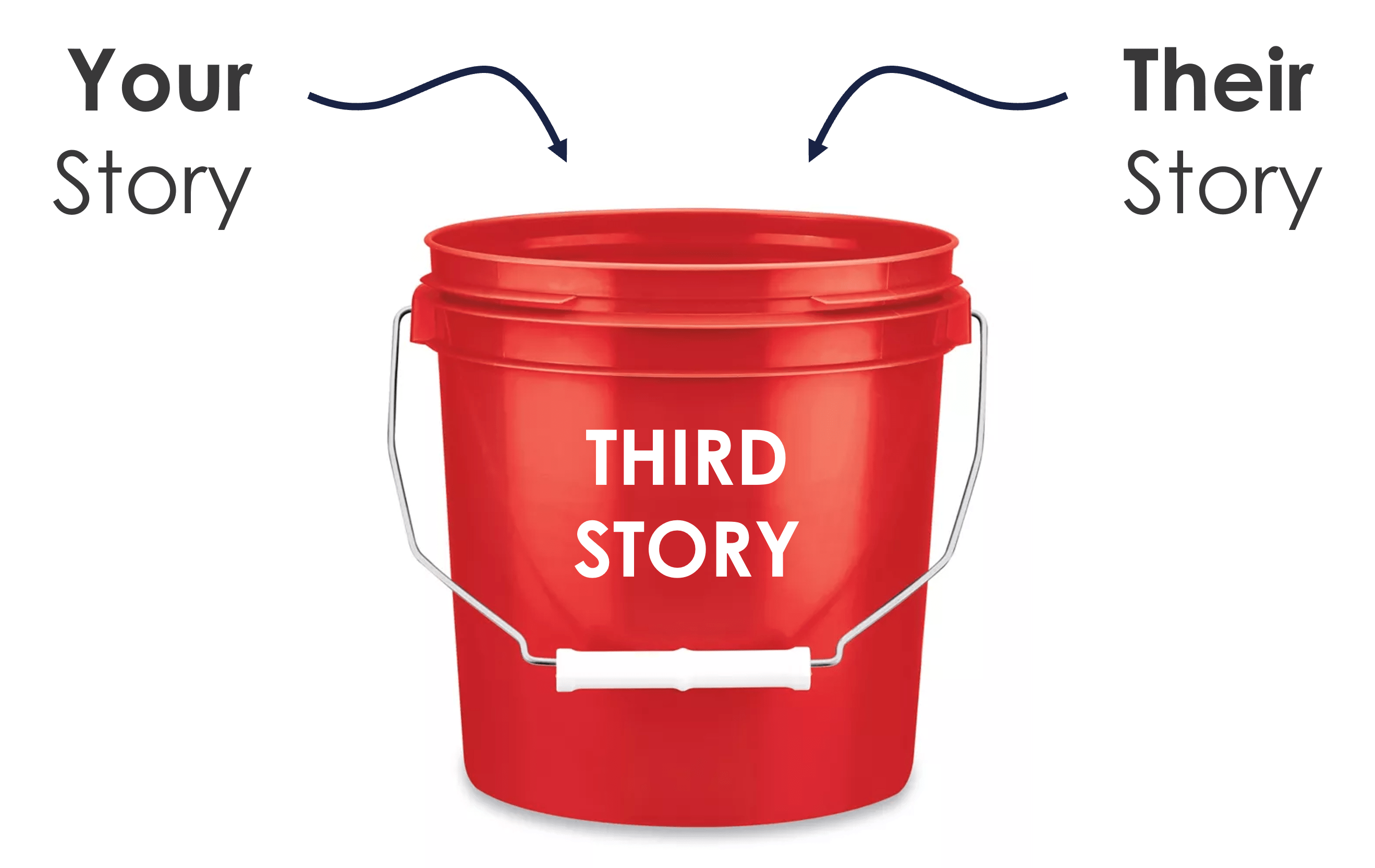 “So, to summarize, I need you to listen to the concerns and questions of your teammates and address them. It’s frustrating for you to have to consider other people’s concerns as you’ve already thought it all through. Further discussion is unnecessary, slows you down, and may interfere with you hitting your numbers. Do I have that right?”
I don’t necessarily have to agree with Leo’s perspective, but I need to get to a place where I understand him, where I can summarize his point of view in a way that he says, “yes, that’s it.” And if that’s not it, then I keep asking questions until we get to the core of the issue. It’s not until we reach that point that we can start problem solving.
It’s this final stage of the conversation that is often more comfortable and familiar – generating options and agreeing on a path forward. It’s best if most of the options come from Leo so that he owns how he wants to move forward but I can offer ideas as well. Together we can agree on a plan and next steps. Be sure to build in support and accountability. “What do you need from me to put this plan into action?” “Let’s schedule time to check-in and see how it’s going.”
“So, to summarize, I need you to listen to the concerns and questions of your teammates and address them. It’s frustrating for you to have to consider other people’s concerns as you’ve already thought it all through. Further discussion is unnecessary, slows you down, and may interfere with you hitting your numbers. Do I have that right?”
I don’t necessarily have to agree with Leo’s perspective, but I need to get to a place where I understand him, where I can summarize his point of view in a way that he says, “yes, that’s it.” And if that’s not it, then I keep asking questions until we get to the core of the issue. It’s not until we reach that point that we can start problem solving.
It’s this final stage of the conversation that is often more comfortable and familiar – generating options and agreeing on a path forward. It’s best if most of the options come from Leo so that he owns how he wants to move forward but I can offer ideas as well. Together we can agree on a plan and next steps. Be sure to build in support and accountability. “What do you need from me to put this plan into action?” “Let’s schedule time to check-in and see how it’s going.”
Manage Yourself
Now, is it ever that easy? Of course not. While it’s helpful to have a map for these conversations, no matter how prepared we are, it never goes exactly how we expect. People are complicated and will almost always throw a wrench into the conversation that we never saw coming. Or they’ll do something that seems perfectly designed to get under our skin – raise their voice, roll their eyes, or say that one thing that touches our most sensitive nerve And so, a big part of the discipline of these conversations is having a plan for how we will manage ourselves in the face of the triggers that could knock us off our game. First, we need to be aware that we’re triggered in the first place. Often, we become our irritation, or our anger. Instead, we need to notice it by tuning into our internal signals – I might notice myself thinking “here we go again with the excuses,” or that my breathing has accelerated, or that I’m starting to feel impatient. These signals are like lights on your car’s dashboard. When the “check engine” light comes on, you don’t smash the dashboard – you check under the hood. The same goes for triggers in tough conversations. Get curious about what the signal is telling you and take corrective action to get yourself back on track before you respond. If we don’t notice and manage our triggers, all sorts of unintended behaviours appear, and we can become the worst version of ourselves. Things start to escalate, or the other person withdraws, and we get further and further from a resolution.The Courage to Coach When it Matters Most
Being effective in these conversations requires the very best of us. It takes self-awareness and being a big person. But the 3×4 Coaching model provides everything we need to succeed. We need to enter the conversation with a generous mindset and clarity on our objective. We deliver a clear opening statement to get the conversation off on the right foot and then drop our agenda to explore the other person’s perspective before we jump into problem solving. It isn’t always comfortable, but the goal of coaching isn’t comfort. It’s about challenging someone to reach their highest potential. It requires the courage to speak up, the patience to wade through the discomfort, and the belief that the people you’re coaching are capable of more. Coaching is, at its core, a deeply human endeavor. It’s a skill that requires empathy, curiosity, and an ability to connect with others on a personal level. Effective coaching demands patience, insight, and adaptability, making it a uniquely human process. Yet, as artificial intelligence (AI) tools like Copilot and ChatGPT become increasingly advanced and widely used, the potential to integrate AI into the coaching process is becoming more apparent. Rather than viewing AI as a replacement for human coaches, we see it as a complement—a tool to augment the learning experience and extend the reach of coaching. Our approach, inspired by our company’s founder Dr. Peter Jensen, is rooted in the idea of AI as “the coach’s coach.” Instead of attempting to replicate the nuanced human interactions of coaching, we’re leveraging AI to sustain learning and assist leaders as they progress toward coaching mastery. AI becomes a tool that helps leaders get comfortable with coaching and sharpens their skills, rather than replacing the critical role of a human coach.Drawing inspiration from “The Coach’s Coach”
Dr. Peter Jensen has been known for decades as “the coach’s coach.” Over 35 years, his focus has been on empowering coaches rather than stepping into their shoes. He works to help them improve their craft and support their teams more effectively, offering guidance, insights, and tools to help them reach their potential. His role isn’t to be the head coach, but instead to act as a mentor and resource for those who are. This philosophy guided us as we considered the potential of AI in leadership and coaching development. What if every leader had access to an AI-powered coach in their pocket—one they could turn to for advice, guidance, and practice whenever they needed it? This vision drives our integration of AI as a tool that complements and supports, rather than competes with, human coaches.Understanding AI’s role in the learning curve
The learning curve is a familiar concept in skill development. It illustrates how people acquire new skills over time, beginning with an initial uncomfortable phase of struggle and slow gains, progressing through steady improvement, and then hitting the final grueling ascent to achieve true mastery. AI’s role is most valuable in the intermediate stages, where learners have built a foundation and consistent practice and support can help them to make big leaps up the curve.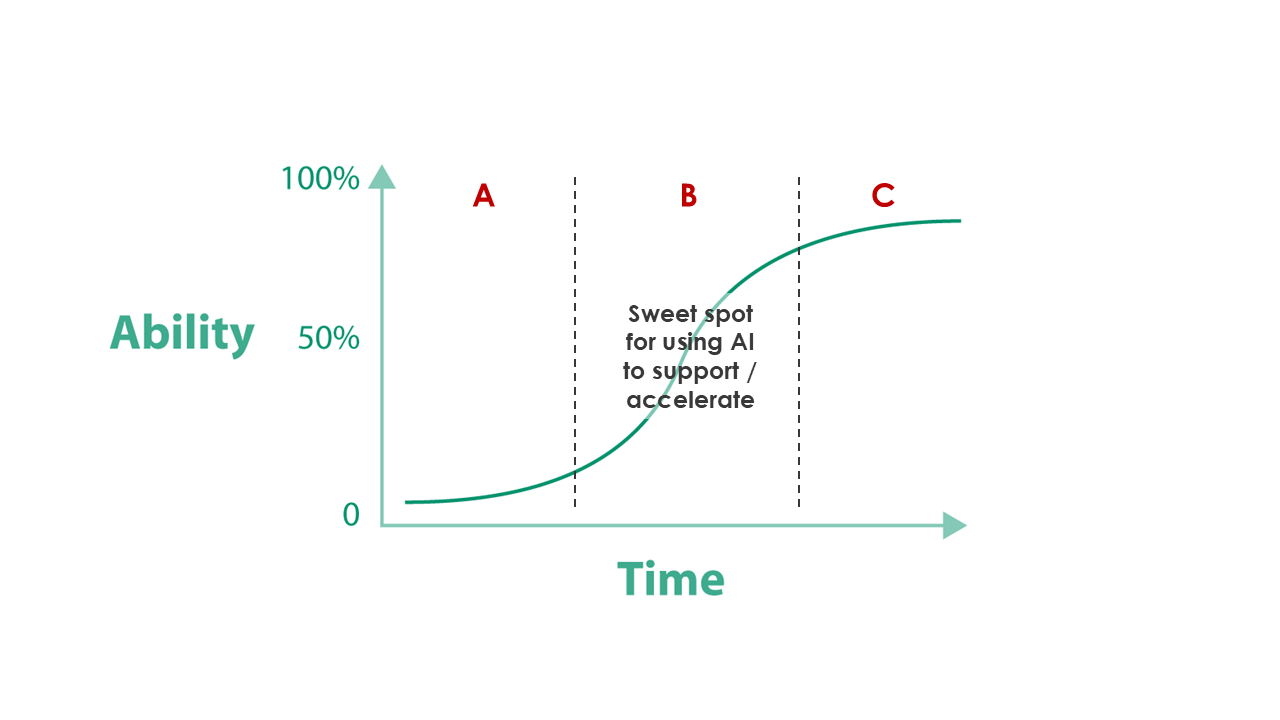
High touch to learn
At the beginning of the learning curve, learners are stepping into unfamiliar territory, and progress can be slow and frustrating. At this stage, motivation, encouragement, and a safe environment to make mistakes are critical. This is where the presence of a human coach is indispensable. Human interaction provides the emotional support and expert guidance that learners need to build confidence and take those first steps.“The goal of this high-touch phase is to equip learners with a solid foundation and prepare them to apply their new skills independently.”For example, in our 3×4 Coaching program, leaders regularly report discomfort with delivering corrective feedback and therefore delay or outright avoid it. In the classroom, we are able to set them up in pods with their peers and, through a triad exercise, show that giving “negative” feedback can be a positive, developmental experience. With the encouragement (and accountability) of their peers, participants take the first steps up the learning curve and start to build confidence. This is not much different than learning to ride a bicycle. Initially, the learner needs someone to hold the bike steady, provide feedback, and offer reassurance. This hands-on support is essential for achieving balance and overcoming the fear of falling. Similarly, in leadership development, learners benefit greatly from in-person workshops or coaching sessions where they can practice new skills, ask questions, and receive real-time feedback. The goal of this high-touch phase is to equip learners with a solid foundation and prepare them to apply their new skills independently.
High tech to transfer
As learners move past the initial hurdles, they enter the middle phase of the learning curve. This is the growth phase, where they’ve gained a basic understanding but need consistent practice to refine their skills and build confidence. At this stage, AI can play a crucial role in supporting learners’ development. AI tools excel at providing scalable, consistent support during this phase. They can simulate real-world scenarios, offer constructive feedback, and serve as a resource for learners to practice and refine their skills. Our pilot programs have confirmed the value of this approach. Leaders who have used our AI tools report that these tools help them apply what they’ve learned in their training programs. For example, our AI tools have been instrumental in helping leaders simulate coaching conversations, deliver feedback effectively, and prepare for performance reviews. By practicing in a non-judgemental, low-stakes environment, they gain confidence and improve their skills before applying them in real-world situations.AI as sustainment
AI is particularly effective at supporting sustainment. To understand this, it’s helpful to distinguish between two types of motivation in the learning process: the motivation to learn and the motivation to transfer.“People are motivated to learn when they encounter new ideas, engaging experiences, or compelling stories.”The motivation to learn is rooted in intellectual curiosity. People are motivated to learn when they encounter new ideas, engaging experiences, or compelling stories. This type of motivation often requires a human touch—someone who can inspire and captivate learners, sparking their interest in the subject matter. These are areas where human coaches excel. They can create dynamic, interactive learning experiences that draw learners in and motivate them to engage with new concepts. The motivation to transfer, on the other hand, is about applying what has been learned in a real-world context. This requires an environment where learners feel supported and confident in their ability to succeed. Motivation to transfer comes from having access to resources, someone to turn to for advice, and a sense of accountability. These are areas where AI shines. By providing tools and guidance for application, AI helps learners bridge the gap between theory and practice. AI can simulate coaching conversations, offer tailored feedback, and provide reminders to keep learners accountable to their goals. It creates an environment where learners can experiment, refine their skills, and build confidence in their abilities—all while supporting their long-term growth.
The future of coaching
The integration of AI into coaching enhances rather than replaces the role of human coaches. While human coaches inspire curiosity, build foundational skills, and connect on a personal level, AI excels at providing scalable, consistent support during the critical growth phase of skill development. This complementary relationship allows learners to benefit from both personalized guidance and accessible tools for practice and refinement. By blending the strengths of human connection and technological capability, we create a sustainable, accessible coaching model. Human coaches can focus on motivation and expertise, while AI supports learners in applying and mastering new skills. This balanced approach ensures coaching remains effective and widely available, fostering a culture where both learners and coaches thrive in an evolving landscape. 15,000 athletes will compete in 878 events across 54 sports at the Paris Olympic and Paralympic Games. To help you narrow in on what to watch, we asked our network of elite athletes, coaches and influencers to share the stories they’re most excited for. Here’s what they said. It might sound silly but one of the things I’m most excited about is for the athletes to experience a ‘normal’ Olympic Games. After an extremely challenging, delayed and socially distanced, Tokyo Games in 2021, this will be the first chance for summer athletes since 2016 to experience that real Summer Games feel. From socializing in the athlete village, to getting out into Paris after they compete to soak up the Games energy, it’ll be incredible! On the performance front, Summer McIntosh is the one to watch in swimming. She’ll have stiff competition with Australia’s Ariarne Titmus, and USA’s Katie Ledecky (among others!), but she’s proved she belongs with the best, and I think she’s got a great shot at some seriously well earned Olympic medals. I’m also really excited to see Josh Liendo lead a quickly improving men’s swim team. He, along with a few other young Canadian men (like Ilya Kharun) have proven that they’re not afraid of the big boys on the world stage, so I think they’ll be ready to leave their mark for Canada too.When to watch
Summer McIntosh: July 27 – August 4 Josh Liendo: July 31, August 3, August 4 Ilya Kharun: July 31, August 3, August 4When to watch
Paralympic Games: August 28 – September 8 Women’s Goalball: August 29 – September 5When to watch
Women’s Beach Volleyball: July 27 – August 9When to watch
Men’s Basketball: July 27 – August 10 Women’s Basketball: July 28 – August 11 Women’s 3×3 Basketball: July 30 – August 5 Men’s Wheelchair Basketball: August 29 – September 7 Women’s Wheelchair Basketball: August 29 – September 8When to watch
Men’s Basketball: July 27 – August 10 Women’s Basketball: July 28 – August 11 Women’s 3×3 Basketball: July 30 – August 5 Men’s Wheelchair Basketball: August 29 – September 7 Women’s Wheelchair Basketball: August 29 – September 8When to watch
Artistic Swimming: August 5 – August 10When to watch
Rowing: July 27 – August 3What is PJ?
We’re calling PJ The Coach’s Coach. It’s a tool designed to help leaders work through coaching challenges and get advice on applying the 3×4 Coaching model, our framework of 3 plays and 4 skills that exceptional coaches use to deliver results and build commitment.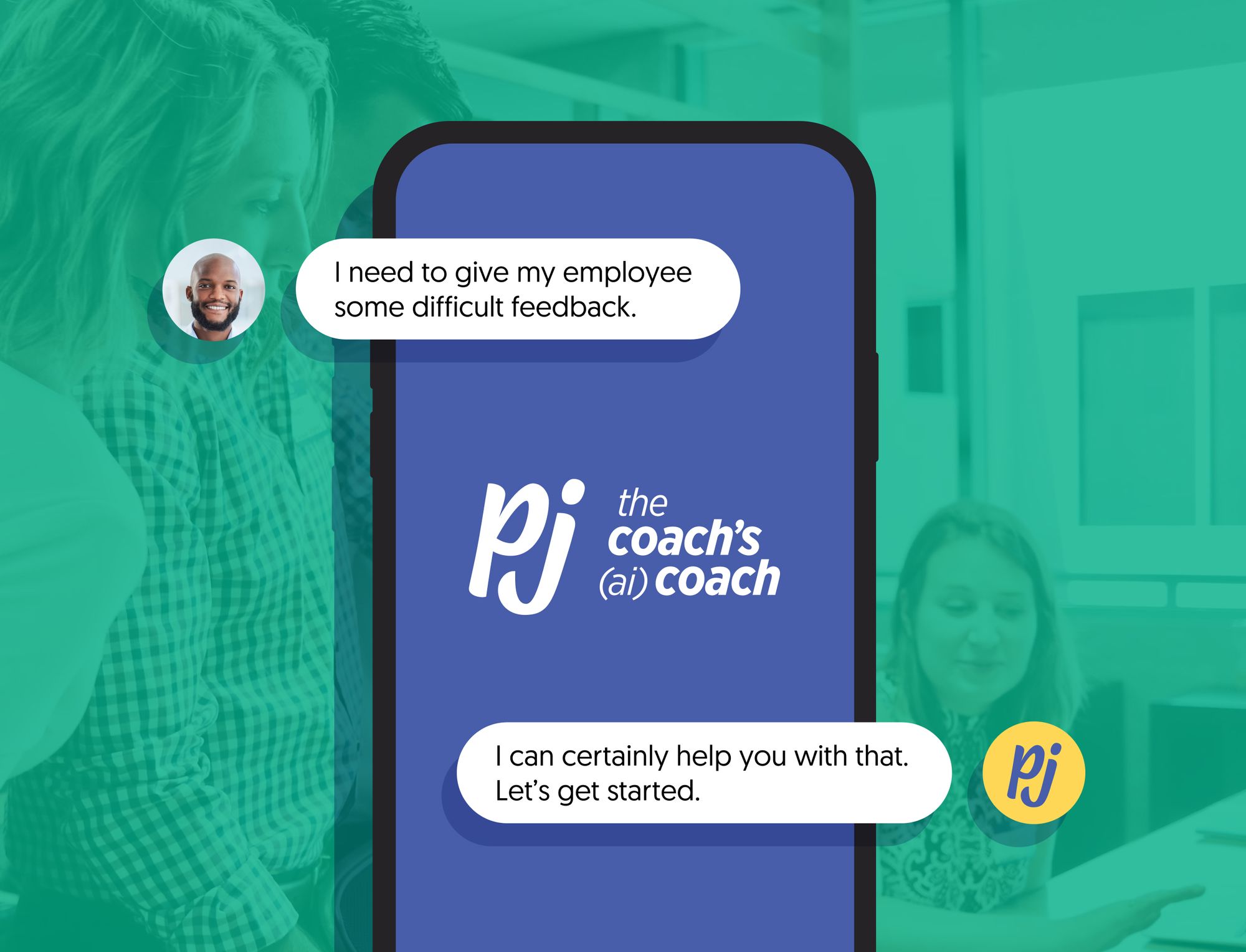 At its heart, PJ is an AI chat bot developed by Third Factor and The Modern Office Company. With a license, you can ask PJ questions and discuss just about anything related to coaching. PJ has been trained in the 3×4 Coaching model and can help you use questions, listening, feedback and confronting to build clarity, improve competence or give recognition.
What really excites us is that PJ is a true coach. Unlike other chat bots that jump straight into giving advice, PJ first listens to understand and asks clarifying questions to get to the heart of every issue. A conversation with PJ flows like a conversation with a real coach – acknowledging the very real challenges of leadership, building clarity about what’s really going on, and generating practical strategies for applying the coaching skills.
At its heart, PJ is an AI chat bot developed by Third Factor and The Modern Office Company. With a license, you can ask PJ questions and discuss just about anything related to coaching. PJ has been trained in the 3×4 Coaching model and can help you use questions, listening, feedback and confronting to build clarity, improve competence or give recognition.
What really excites us is that PJ is a true coach. Unlike other chat bots that jump straight into giving advice, PJ first listens to understand and asks clarifying questions to get to the heart of every issue. A conversation with PJ flows like a conversation with a real coach – acknowledging the very real challenges of leadership, building clarity about what’s really going on, and generating practical strategies for applying the coaching skills.
What can PJ help with?
PJ is designed to help with just about any coaching challenge. Whether you need help building clarity around an issue, delivering difficult feedback, or finding the right way to recognize a team member’s efforts, PJ is there to help. Here is a list of sample prompts you might give PJ across a variety of categories:Work through challenges
- My direct report seems unmotivated and I’m not sure why
- I’m struggling to build a relationship with a new team member
- I’m not sure how to best coach someone with more experience than me
Prepare for a Conversation
- Help me prepare for a challenging conversation with my direct report
- I need to have a team discussion to clarify performance expectations
- How should I deliver feedback on something that I didn’t directly observe?
Enhance skills
- Give me a scenario to practice using the BID feedback model
- What are strategies for improving my active listening?
- How can I get more comfortable with having tough conversations?
Generate ideas
- What are some simple but personalized recognition ideas for my team?
- What are approaches to identify my team’s strengths and weaknesses?
- I’d like ideas for quickly building relationships with new team members
Coach in different contexts
- How do I coach someone from a different generation than me?
- What are strategies for coaching someone who doesn’t report to me?
- How do I adjust my coaching for in-person vs. remote team members?
Deepen coaching knowledge
- Can you explain the concept of ‘developmental bias’ in more detail?
- Does the BID model work for both reinforcing and corrective feedback?
- What does it mean to use emotion as a fuel for change?
See PJ in action
PJ is trained to coach you through problems rather than just giving answers. After you explain what you need, PJ will ask clarifying questions to understand the nature of the coaching challenge. It will then help you discover how to apply the coaching plays and skills to address the issue and help you create a detailed action plan. Here’s a real conversation with PJ about a team member’s punctuality to give you an idea of just what PJ can do.How do I get access to PJ?
PJ is currently in a closed Beta and not available to the general public. If you want to try PJ and give us feedback on how to improve, send us an email explaining your coaching challenge and why you think PJ could help. Welcome to our summer reading list for 2024. The team at Third Factor has once again come together to recommend their top reads from the past year. Whether you want fiction, non-fiction, or even a cookbook filled with new recipes to try, you’re sure to find something new and interesting on this list. This year, we’ve included a special recommendation from our new AI coaching companion, PJ. What does a virtual 3×4 Coaching expert recommend you read this summer? Scroll down to find out.Ask will teach you how to read other people’s minds. Okay, maybe not literally – but author Jeff Wetzler shows convincingly that, with the right questions and the right approach to listening, we can get incredibly good at knowing what others are thinking. The book opens with a sobering look at how bad we are at intuiting others’ thoughts and feelings, and how easy it is to stay on the surface without ever benefitting from the thoughts and opinions that others truly hold, but may be reluctant to share. Wetzler lays out a highly practical framework for curiosity, packed with great questions and tips for listening. As someone who speaks for a living, I am always looking to get better at listening – and this has been an incredibly helpful book.
I highly recommend “Hidden Potential” by Adam Grant, especially for its take on team dynamics. The book shows that team success isn’t just about picking the most skilled people but about building the glue that holds everyone together. This resonated with my experience with Canada’s National Basketball Team. Their World Cup success wasn’t just about talent but their unity and teamwork, leading to their first Olympic qualification in over 20 years. Grant’s insights reflect what I’ve seen firsthand in sports.
I heard Pooka Lakshmin speaking about “faux self-care” on the Ezra Klein podcast and was very intrigued so I picked-up her book. It’s very thoughtfully written with examples from Lakshmin’s clinical practice and her own experiences. She points out that self-care shouldn’t be something to add to your to-do list but behaviour changes in your everyday life. She breaks down the four key elements of self-care: boundaries, self-compassion, getting to know yourself, and asserting your power. She even explains how the more we practice these concepts the more we can impact change on a larger scale. I am already working on incorporating tips from the book, and I feel off the hook for not being into meditation or yoga.
As someone who isn’t a big fiction-reader (but loves history!), The Amazing Adventures of Kavalier and Clay is an epic novel that blends history, adventure and human emotion into a masterpiece. It’s set against the backdrop of World War II and follows the journey of Joe Kavalier and Sam Clay, two cousins, as they move from Europe to navigate the world of 1930s America. Joe Kavalier, a talented artist and escape artist, escapes Nazi-occupied Prague to seek refuge in New York City, where he teams up with his cousin Sam Clay, an ambitious writer, to create the iconic superhero “The Escapist.” As they rise to fame, they encounter love, loss and challenges while facing their own personal struggles, relationships and identities. Chabon does an excellent job bringing the streets of New York City to life, as the layers of complexity to each character makes for a beautifully crafted and captivating story of friendship, creativity and strength in the face of adversity. It’s a fun, nostalgic and uplifting read for summertime.
A senior executive at Stripe and former senior executive at Google, Johnson has made an impact in some of the biggest and fastest growing companies in the world. The book is full of incredibly practical advice and tools. More importantly, it helps leaders understand how to deliver on a key challenge: leading with both empathy and accountability. If you get the audio version, as an added bonus, the author personally reads the book, which in my experience, truly makes the words come to life.
“Leaders Eat Last” by Simon Sinek is an essential read for anyone aspiring to become a better leader in their organization. Sinek explores the core principles of leadership that build trust, foster collaboration, and drive innovation within teams. By creating a culture where employees feel valued and empowered, the book offers actionable insights that can transform your leadership style and significantly improve team dynamics and performance. Embrace these principles to inspire and lead your organization toward sustained success.
“Demon Copperhead” is a compelling novel that reimagines Charles Dickens’ “David Copperfield” in modern Appalachia, following a resilient and sharp-witted kid named Demon navigating tough times, poverty, and additiction. It’s a powerful story about overcoming adversity and offers deep insights into human resilience and empathy.
This is a book about the practice of paying attention and refining our sensitivity to tune in to the more subtle notes. This is not a book you read and put on a shelf. You can pick it up any time as it is dripping with wisdom, for life, art and creativity. I love everything about this book, from the person who suggested it and bought it for me through to the texture of the creative cover and silky pages in between. Rubin suggests that living in discovery is at all times preferrable to living through assumptions. I like that perspective.
With summer just around the corner and my daughter’s wedding fast approaching, I’m diving into the Love and Lemons Cookbook for some culinary inspiration. This cookbook is a treasure trove of effortless and delicious vegetarian recipes, perfect for the special occasion at our cottage. With many vegetarians among our guests, I want to ensure that the weekend is filled with delightful and satisfying meals. If anyone has favorite meatless recipes to share, I would love to hear them! Let’s make this celebration as tasty as it is memorable.
For a deep dive into the psychology of change and how to guide others through it, “Immunity to Change: How to Overcome It and Unlock the Potential in Yourself and Your Organization” by Robert Kegan and Lisa Laskow Lahey is a fantastic choice. It explores why people resist change, even when it’s in their best interest, and offers practical steps for identifying and overcoming those internal barriers. It’s particularly insightful for coaches working with individuals facing significant personal or professional transitions.
“Remarkably Bright Creatures” by Shelby Van Pelt is a delightful read. This heartwarming and immensely readable novel explores the power of connecting with other living creatures and its impact on our lives. With a clever storyline and a touch of mystery, it’s perfect for a feel-good summer read. If you enjoyed “A Man Called Ove,” you’ll love this book.
